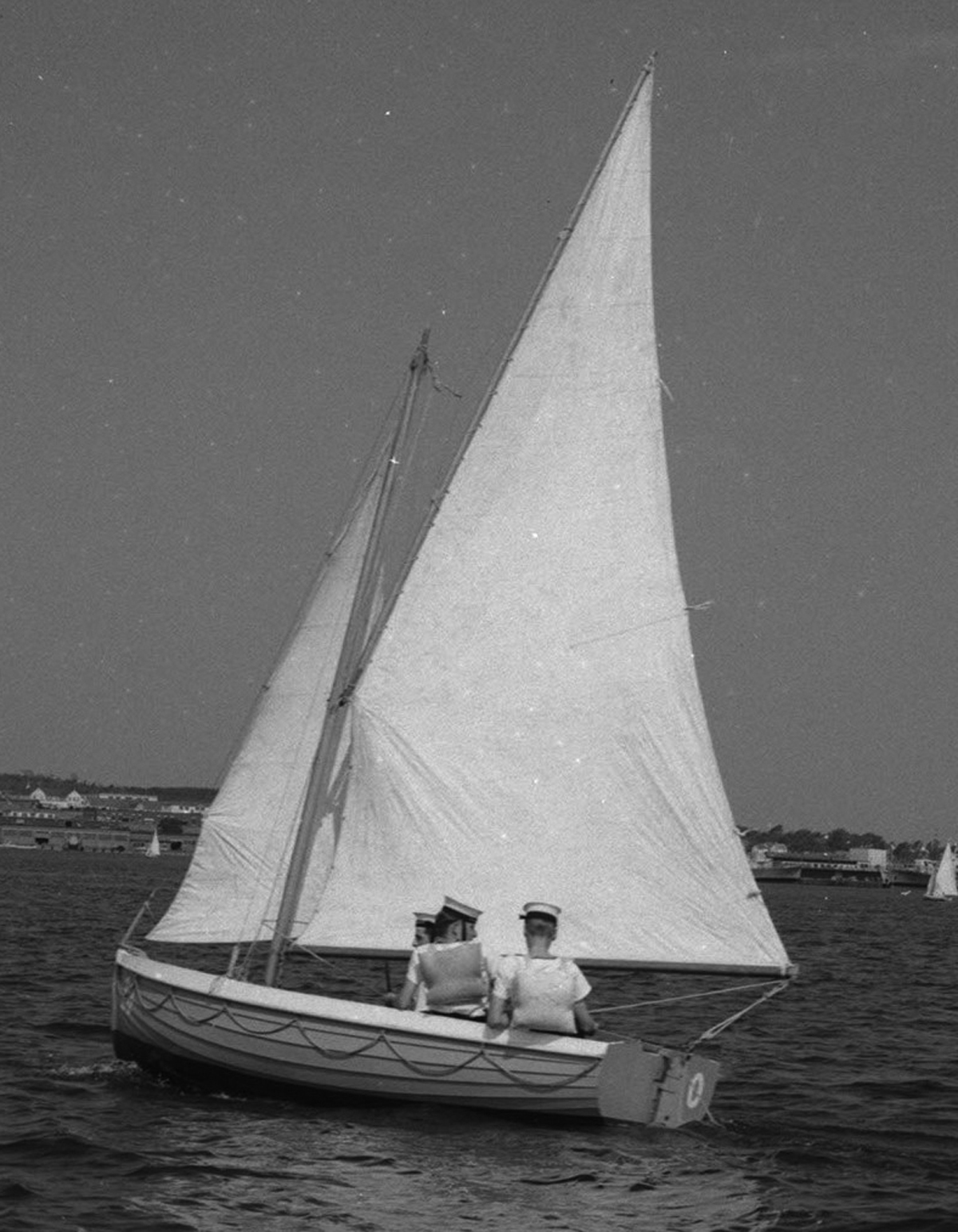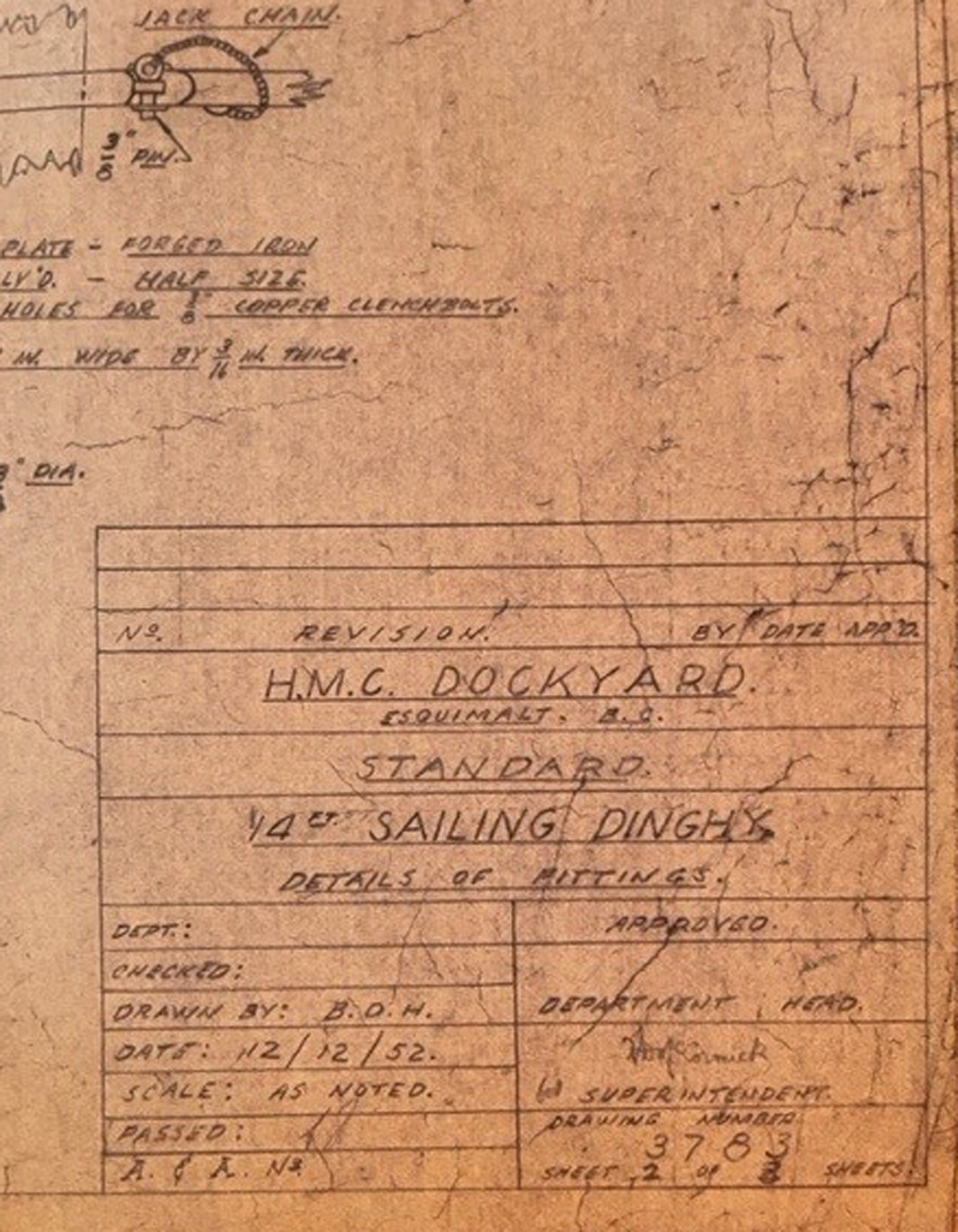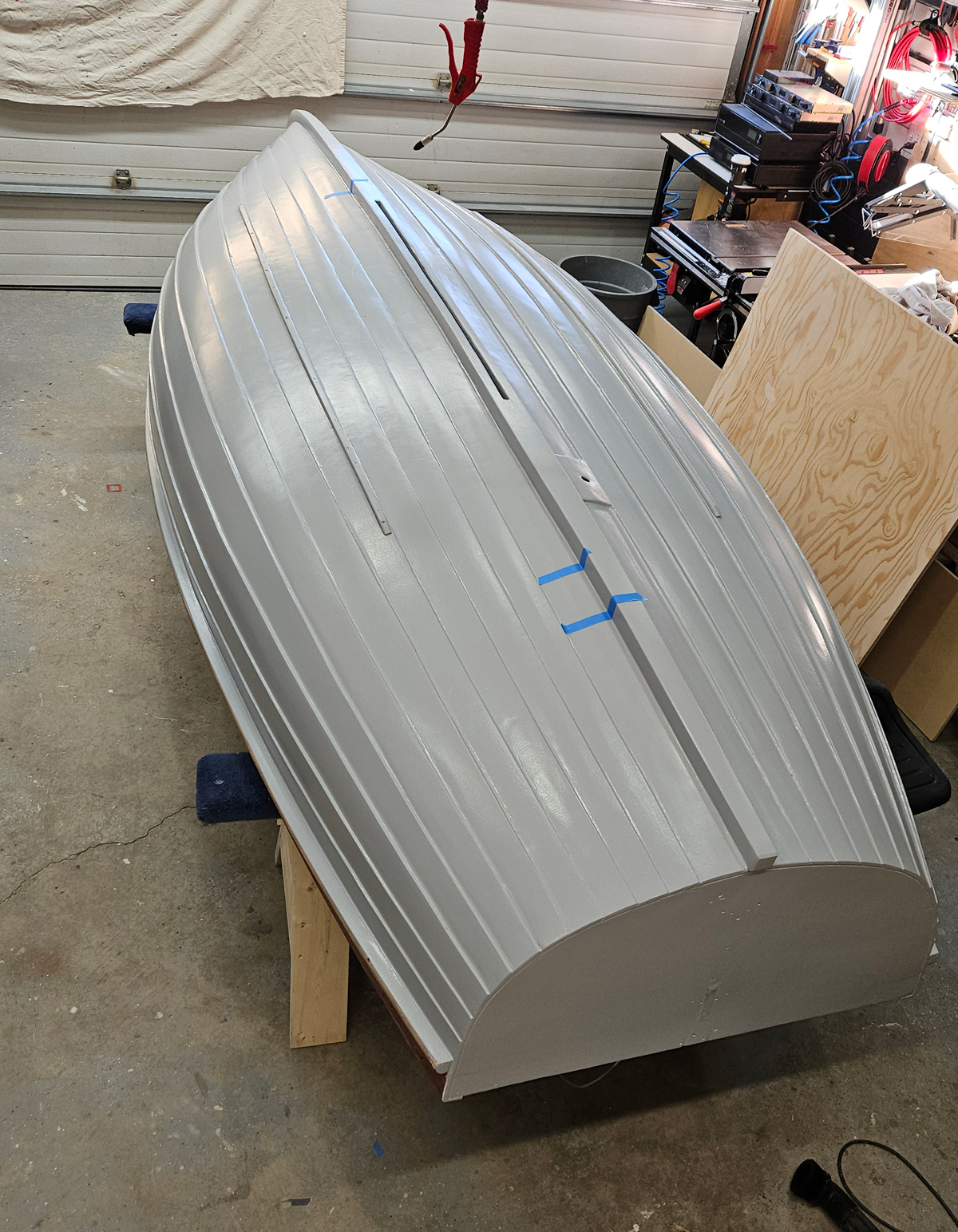Dilapidated dinghy gets museum makeover
By Lookout Production on Feb 14, 2024 with Comments 0

A taste of the sailor’s life in cadets inspires many to make it their career. At 16 cadets are eligible for trade training in the regular navy. For cadets who wish to continue their education, several scholarships are offered.
Peter Mallett,
Staff Writer
—
A historic navy sail-training dinghy completed an improbable journey from castaway at an Army surplus store to a prized addition to a naval museum’s collection.
“It still astounds me the stories behind how many of our naval artifacts turn up,” says Bradley Froggatt, Alberta Naval Museum curator. “Because of the builder’s date, this boat may have been carried aboard a Tribal-class destroyer or on one of Canada’s frigates but much of its past is still unknown.”
The recent donation of the Admiralty Patter 14-foot, Royal Canadian Navy (RCN) sail-training dinghy is a unique find for the museum. Admiralty Dinghies were used to train shipwrights in basic boatbuilding skills and basic sail-training instruction for junior RCN officers and crew. The craft bears an identifying mark on its transom (stern): ‘HQ 680 length 14 feet built in 1953’.
Froggatt served 28 years in the Royal Canadian Navy (RCN) before his retirement in 2015 and previously sailed on similar dinghies many decades ago when he was a member of the Royal Canadian Sea Cadets. He says he and museum staff were amazed when they heard how the craft fell into the donor family’s possession.  Surplus treasure
Surplus treasure
According to Cecelia Hund-Reid of Comox, B.C., her late husband, John Reid, discovered the dingy in 1976. It was dilapidated and languishing in the yard of a military surplus store in Bashaw, Alta.
“The boat had been outdoors for some time and looked quite worn, but John immediately recognized the ‘bones of the boat’ were solid, and there was real potential for it to be brought back to life,” Hund-Reid said.
Reid was a former educator and sailboat and paddling enthusiast. He learned how to build and restore wooden boats in his spare time. Hund-Reid was at her husband’s side when he first saw the dinghy at the surplus store. Although she cannot remember how much he paid for it, she can recall his excitement about the dinghy.
“John had a passion for wooden boats, the history, design, construction, and the crafting of them, and especially the Admiralty Dinghy,” she said. “He saw and admired the craftsmanship and skill that must have gone into building the boat and transported it to our home in Edmonton, where it was cherished for many years.”
Reid consulted with the Naval Dockyard in Esquimalt and the Maritime Museum of the Atlantic during the restoration process. He received copies of the boat’s building plans and specifications to facilitate its restoration. With the dinghy fully restored by Reid, it resided at the family’s property in Cold Lake, Alta., for many years.
His daughter Meaghen Taylor-Reid says she can clearly remember the attention the dinghy received from other boaters when they sailed in it.
“I’ll never forget the pride Dad took in having us out on the boat and teaching us to sail,” Meaghen said. “I’m so glad the preservation of this magical piece of history has been coordinated with the museum.”
The Hund-Reid family donated the dinghy to the museum in 2022. Reid’s original intent was to present the dinghy to the HMCS Quadra Naval Cadet Training Centre in Comox, but Hund-Reid says he would be delighted to know naval cadets and many other people from across the country will see his beloved dinghy at the Alberta Naval Museum. Restoration underway
Restoration underway
A conservation project is currently underway by Jason Edwards, a museum volunteer, under Froggatt’s direction. The intention is to revert the dinghy to its original state when it was an RCN craft.
“When the dinghy was received, despite its previous restoration, it was evident age and years left unused in storage had taken a toll on the boat and its conservation was necessary in preparation for long-term exhibition at the museum,” said Froggatt.
Hund-Reid says she and the family are delighted with the outcome.
“We are honored and pleased the dinghy will reside in the museum where it will be protected and preserved for a long time for the public to view,” she said.
Froggatt says the museum expects to have the dinghy installed as part of its exhibit in the spring of 2024. It will include interpretive panels of its use by both the RCN and Royal Canadian Sea Cadets.
For more information about the Naval Museum of Alberta, visit their website: www.navalmuseumab.ca

The dinghy is looking great thanks to the help of the conservation project. Photos supplied.
Filed Under: News Release • Top Stories
About the Author:





